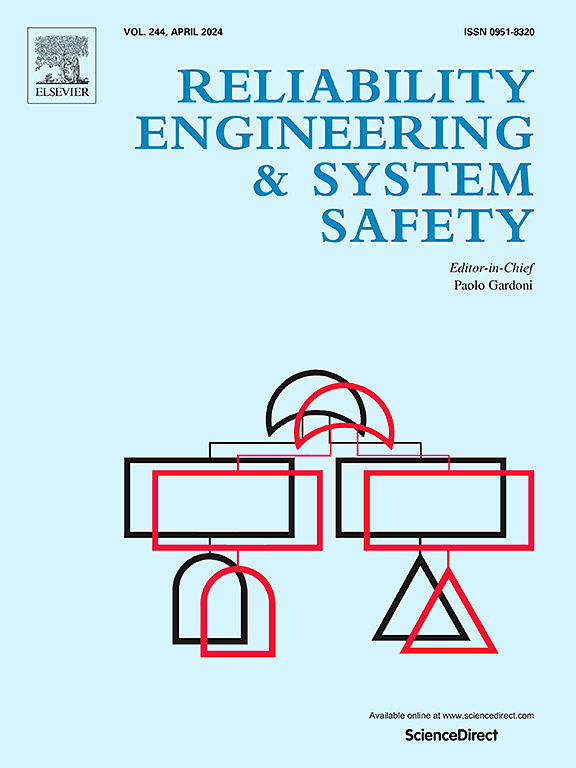Analyzing the dynamic domino effect in fuel truck parking lots
IF 9.4
1区 工程技术
Q1 ENGINEERING, INDUSTRIAL
引用次数: 0
Abstract
Fuel truck parking lots are crucial components of transportation networks, facilitating the storage and organization of fuel trucks to ensure efficient fuel distribution. These facilities play a vital role in minimizing transportation delays and reducing emissions. However, the proximity of fuel tanks in these lots poses inherent risks, including fire, explosions, and domino accidents. The present study aimed to analyze the domino effect in fuel truck parking lots. To achieve this, a hybrid approach combining the Dempster-Shafer Theory (DST) method with the Bayesian networks (BNs) was employed for quantitative cause-consequence analysis. Additionally, empirical equations were utilized to model the consequences, followed by the dynamic analysis of the domino effect using the Multi-Agent (MA) method. The accuracy of the introduced hybrid method was evaluated through a case study conducted at one of the most sizable parking lots. The study demonstrated the effectiveness of proposed approach in quantifying risks and identifying mitigation strategies, highlighting its applicability in real-world scenarios. Moreover, the proposed hybrid model offers a scientifically rigorous framework for handling uncertainty, providing valuable insights for enhancing safety measures and mitigating risks in fuel truck parking lots.
油罐车停车场动态多米诺效应分析
油罐车停车场是油罐车运输网络的重要组成部分,便于油罐车的储存和组织,保证燃油的高效配送。这些设施在减少运输延误和减少排放方面发挥着至关重要的作用。然而,这些地段的燃料箱附近存在固有的风险,包括火灾、爆炸和多米诺骨牌事故。本研究旨在分析燃油车停车场的多米诺效应。为此,采用Dempster-Shafer理论(DST)方法与贝叶斯网络(BNs)相结合的混合方法进行定量因果分析。此外,利用经验方程对后果进行建模,然后使用Multi-Agent (MA)方法对多米诺骨牌效应进行动态分析。通过一个大型停车场的实例研究,对所引入的混合方法的准确性进行了评估。该研究证明了拟议的方法在量化风险和确定缓解战略方面的有效性,突出了其在现实情景中的适用性。此外,所提出的混合动力模型为处理不确定性提供了科学严谨的框架,为加强燃油车停车场的安全措施和降低风险提供了有价值的见解。
本文章由计算机程序翻译,如有差异,请以英文原文为准。
求助全文
约1分钟内获得全文
求助全文
来源期刊

Reliability Engineering & System Safety
管理科学-工程:工业
CiteScore
15.20
自引率
39.50%
发文量
621
审稿时长
67 days
期刊介绍:
Elsevier publishes Reliability Engineering & System Safety in association with the European Safety and Reliability Association and the Safety Engineering and Risk Analysis Division. The international journal is devoted to developing and applying methods to enhance the safety and reliability of complex technological systems, like nuclear power plants, chemical plants, hazardous waste facilities, space systems, offshore and maritime systems, transportation systems, constructed infrastructure, and manufacturing plants. The journal normally publishes only articles that involve the analysis of substantive problems related to the reliability of complex systems or present techniques and/or theoretical results that have a discernable relationship to the solution of such problems. An important aim is to balance academic material and practical applications.
 求助内容:
求助内容: 应助结果提醒方式:
应助结果提醒方式:


